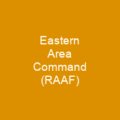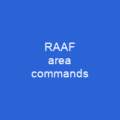Sergeant is a rank in many uniformed organizations, principally military and policing forces. The alternative spelling, serjeant, is used in The Rifles and other units that draw their heritage from the British Light Infantry. In most armies the rank of sergeant corresponds to command of a squad. In Commonwealth armies, it is a more senior rank, corresponding roughly to a platoon second-in-command. More senior non-commissioned ranks are often variations on sergeant.
About Sergeant in brief

The title is now given to an officer in modern legislative bodies who is charged with keeping order during meetings and, if necessary, forcibly removing disruptive members. In medieval European usage, a sergeant was simply any attendant or officer with a protective duty. A specific kind of military sergeant was theserjeant-at-arms, one of a body of armed men retained by English lords and monarchs. The sergeant class was deemed to be ‘worth half of a knight’ in military value. The term’sergeant’ is also used in many appointment titles, including the title of a police officer and the title sergeant. The ranks are equivalent to each other in the Australian Army and the Royal Australia Air Force. The most common rank is sergeant classed as non-naval military or paramilitary organizations, ranking above privates and corporals, and below warrant officers and commissioned officers. It is the equivalent to the rank of petty officer in the UK Police forces, below an inspector and below a lieutenant or, in the British Army, below a corporal. It also has civilian applications quite distinct and different from the military sergeant, though sharing the etymological origin – for example the serjeants-atlaw, historically an important and prestigious order of English lawyers. The word’sergeant’ means’servant, valet, court official, soldier’, from Middle Latin servientem. It was a slightly junior role to the knight in the medieval hierarchy.
You want to know more about Sergeant?
This page is based on the article Sergeant published in Wikipedia (as of Jan. 03, 2021) and was automatically summarized using artificial intelligence.







